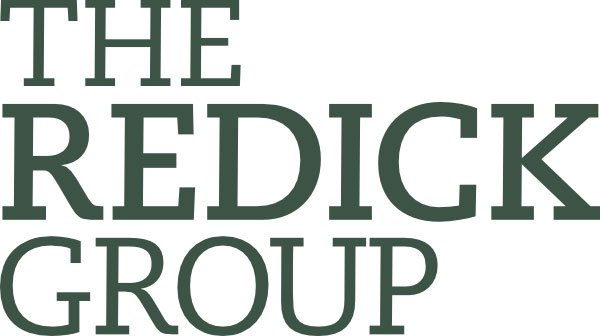What's the difference between retained executive search and contingency recruiters?
Editor's Note: This article was originally published in 2017 and has been fully updated to reflect today's executive search landscape and the nuances that matter to senior leaders considering their next move.
Like fine wine aging in carefully selected barrels, executive leaders develop their most valuable qualities through years of strategic positioning and professional maturation. The growth process doesn't rush; it unfolds naturally under the right conditions, creating complexity and depth that only time can produce. But here's what most executives don't understand about being 'discovered' by retained executive search. Much like premium wines, they need to be worthy of selection first.
What’s the real difference and why does it matter for an executive’s career?
Retained executive search firms are hired exclusively and paid upfront to fill high-level roles, focusing on confidentiality, cultural fit, and a rigorous, research-driven process. Contingency recruiters are paid only if their candidate is hired, typically working on more roles at once and prioritizing speed and volume.
For executives, knowing how each model works—and how to get on their radar—can make the difference between being a top-tier candidate and getting lost in the shuffle.
How can executives use search firm dynamics to their advantage?
The insider’s perspective
Having spent time inside retained executive search, I've seen firsthand how the mechanics of search shape outcomes for both organizations and candidates. Since then, I've worked with countless current and aspiring board directors, helping them develop materials and strategies to position themselves for board service.
If you're a senior executive contemplating a transition, understanding how each model works isn't just academic; it's the difference between being positioned for the right opportunities and being found when it matters most.
How retained executive search works: The master vintner’s approach
Clients pay for certainty, not just effort. Retained firms are engaged to deliver a shortlist of carefully vetted, high-caliber leaders for complex, high-stakes roles. The process is rigorous: market mapping, confidential outreach, deep referencing, and cultural fit assessment.
Retained executive search firms, like master vintners, are looking for executives who have been developing their leadership capabilities under optimal conditions—not those who are actively seeking change. They want leaders who have been 'aging' successfully in their current roles, developing complexity and depth over time.
Most searches are confidential. These roles are rarely advertised. The best candidates are often "happy where they are"—and are approached discreetly, sometimes months before a public announcement.
Unsolicited résumés can hurt you in some cases. Retained firms may view unsolicited outreach as a red flag, signaling a candidate who is running from something rather than to something. Just as only certain wines are selected for premium aging—not every wine improves with age—retained search firms are highly selective about which executives they consider. A wine that's actively seeking a new barrel suggests something may be wrong with its current environment, raising questions about its quality and stability.
Insider tip: If a retained recruiter reaches out, treat the interaction as a confidential, mutual assessment—not a job pitch. Share your story, ask about the mandate, and remember: you're being evaluated for both fit and discretion.
Who are the top retained search firms?
Korn Ferry
Spencer Stuart
Heidrick & Struggles
Egon Zehnder
Russell Reynolds Associates
Diversified Search Group
ZRG Partners
These firms are frequently engaged for board and C-suite searches and are recognized for their rigorous, confidential processes.
How contingency recruiting works: The broader wine market
While retained search resembles the careful selection and aging of premium wines, contingency recruiting is more like the broader wine market—faster-moving, more accessible, and open to a wider range of candidates.
It's a numbers game. Contingency recruiters are incentivized to present as many qualified candidates as possible, as quickly as possible. They may be working dozens of roles at once, often with overlapping candidate pools.
They're open to unsolicited résumés. Contingency recruiters are generally more receptive to inbound interest, especially for mid-level or urgent searches.
Visibility and responsiveness matter. Your executive résumé and LinkedIn profile should be crisp, keyword-optimized, and ready to be shared at a moment's notice.
Insider tip: Build relationships with a select few contingency recruiters who specialize in your sector. Keep them updated on your status, but don't expect the same level of advocacy or discretion as with a retained search.
Leading contingency recruiting firms
Robert Half
Randstad
DSG Global (Diversified Search Group)
DHR Global
Major, Lindsey & Africa
Solomon Page
Kaye/Bassman International
These agencies are often engaged for mid-level to upper management roles and are recognized for their speed and breadth.
Executive search isn’t a straight line—it’s developing your vintage over time
In today's executive search landscape, being ready isn't enough. You need to be findable. Success means understanding how search firms map the market, leverage networks, and use digital tools to discover top talent. Like premium wines that develop their character through careful aging, executives must cultivate their professional reputation and expertise over time to be worthy of selection.
LinkedIn: Aging beautiful in your current barrel
Present yourself as if you're happy where you are: The best candidates are rarely active job seekers. Use your profile to demonstrate impact, thought leadership, and stability—not to signal desperation or restlessness. Your LinkedIn profile should present you as a wine that's aging beautifully in its current barrel—thriving, developing, and gaining value, rather than one that's actively seeking a new container. Recruiters are drawn to executives who appear engaged and valued in their current roles.
Optimize for searchability: Use keywords, complete job titles, and industry-specific language. Recruiters use Boolean search to find candidates, so include variations: "Chief Financial Officer," "CFO," "Financial Leadership," etc.
Share insights and engage thoughtfully: Publish articles, comment on industry trends, and participate in relevant discussions. This signals expertise and approachability—two qualities both search models value. Show that you're continuing to develop complexity and depth in your current role, building expertise and reputation over time.
Maintain professional boundaries: Don't overshare sensitive information. Recruiters appreciate discretion and understand the need for confidentiality in your online presence.
Real-World Example
I've worked with "purple squirrel" clients—those rare, uniquely qualified executives—who were discovered by top search firms precisely because their LinkedIn profiles showcased their expertise and leadership, all while projecting confidence in their current roles. These executives understood that being chosen for retained search is a mark of distinction—like being selected for premium aging—rather than a service they should expect to purchase.
FAQs
Should I ever send my résumé directly to a retained search firm? Generally, no. Retained firms prefer to discover you through research or referral. Focus on building your reputation and visibility instead.
How do I know if a recruiter is retained or contingency? Ask how they're engaged and who their client is. Retained recruiters work exclusively and confidentially for the hiring organization; contingency recruiters often represent multiple clients and roles at once.
What's the risk of being "too visible" to contingency recruiters? You risk being submitted for multiple roles without your knowledge, which can create confusion or even damage your reputation if not managed carefully.
Be found by retained executive search
Having sat on both sides of the table, I know that executive search is as much about alignment and timing as it is about credentials. By understanding how the process works—and positioning yourself accordingly—you can ensure you're considered for the right roles, at the right time, and on your own terms.
The finest wines reveal their character only when they've had time to develop fully. Similarly, retained executive search finds its best matches among leaders who have been thoughtfully cultivating their expertise and reputation over time. LinkedIn has created a virtuous cycle: when you position yourself professionally and maintain an active, visible presence, the right people find you—sometimes now, sometimes years down the line. Never before has such an opportunity existed for passive discovery by both retained and contingency search professionals.
The executives who attract the best opportunities—whether through retained search or direct approach—are those who have taken control of their professional narrative and career positioning. Position yourself as premium talent aging gracefully in your current role, and let the master vintners of executive search discover your true value.
Learn how we can help you take control of your next chapter so you can be found for the opportunities that matter most. Or schedule a conversation to ask pressing questions and start fashioning a job search strategy.
This post is part of our series on retained executive search; see here to learn about becoming a passive target of acquisition for leadership roles.
About Jared
Jared Redick is a San Francisco-based executive coach, communications strategist, and brand development consultant with more than 25 years of experience helping companies and high-level professionals position themselves for growth and change.
📚 Continue Reading: Executive Positioning & Search Strategy
How to Write an Executive Résumé for Retained Search Firms
Learn the foundational approach to résumé development that prioritizes substance, strategic narrative, and niche positioning over design trends.
What Separates Executive Finalists in Retained Search: How Strategic Perspective Becomes the Deciding Factor
Discover what search firms actually evaluate beyond your résumé—and why strategic thinking separates finalists from qualified candidates.
How to Position Yourself as a CTO Candidate for Retained Executive Search: Beyond Team Size and Tech Stack
Written originally for CTOs, but broadly applicable to most leadership roles. Learn how to move beyond commoditized metrics and demonstrate the downstream business impact that differentiates C-suite leaders.
When Fear Poses as Pragmatism: How Self-Limiting Thinking Derails Executive Career Decisions
Understand the psychological patterns that prevent executives from positioning themselves strategically during transitions—and how to break the cycle.
📌 More on Executive Résumés & Positioning
References
The Redick Group. (2017). "The differences between retained executive search and contingency recruiters."
LinkedIn. (2024). "How to write your LinkedIn profile so that executive recruiters contact you."
Hunt Scanlon Media. (2025). "Top 50 Executive Search Firms in the Americas."
LinkedIn Optimization. (2025). "Generate Executive-Level LinkedIn Keywords That Get You Found."
Forbes. (2023). "The Ultimate Guide To Crafting A LinkedIn Profile That Recruiters Love."
MSH. (2025). "Top Board & Executive Search Firm Rankings For 2025."
Jake Jorgovan. (2025). "Top 11 Contingent Workforce Recruiters."
LinkedIn. (2025). "The Power of LinkedIn Keywords: How to Get Found by Recruiters."
Job-Hunt.org. (2022). "7 Ways To Optimize Keywords For Your LinkedIn Profile."
(This post was updated on July 11, 2025 to incorporate new industry statistics, digital sourcing trends, and expanded advisory roles within executive search.)


